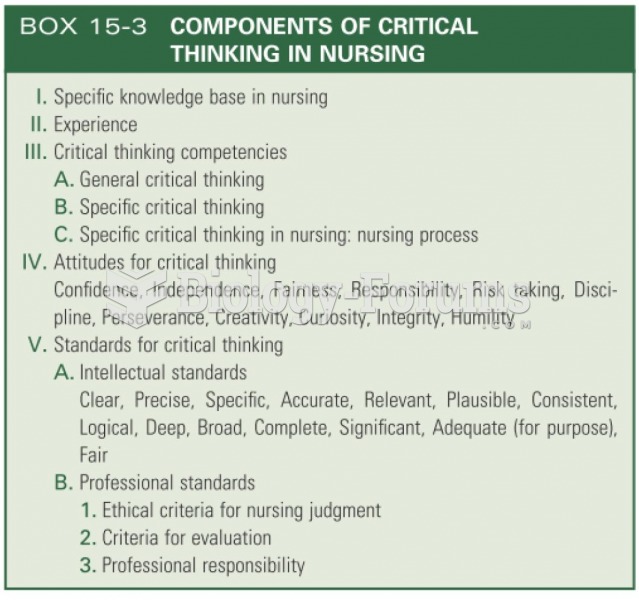|
|
|
The first oncogene was discovered in 1970 and was termed SRC (pronounced "SARK").
In the United States, an estimated 50 million unnecessary antibiotics are prescribed for viral respiratory infections.
There can actually be a 25-hour time difference between certain locations in the world. The International Date Line passes between the islands of Samoa and American Samoa. It is not a straight line, but "zig-zags" around various island chains. Therefore, Samoa and nearby islands have one date, while American Samoa and nearby islands are one day behind. Daylight saving time is used in some islands, but not in others—further shifting the hours out of sync with natural time.
Approximately one in three babies in the United States is now delivered by cesarean section. The number of cesarean sections in the United States has risen 46% since 1996.
On average, the stomach produces 2 L of hydrochloric acid per day.







